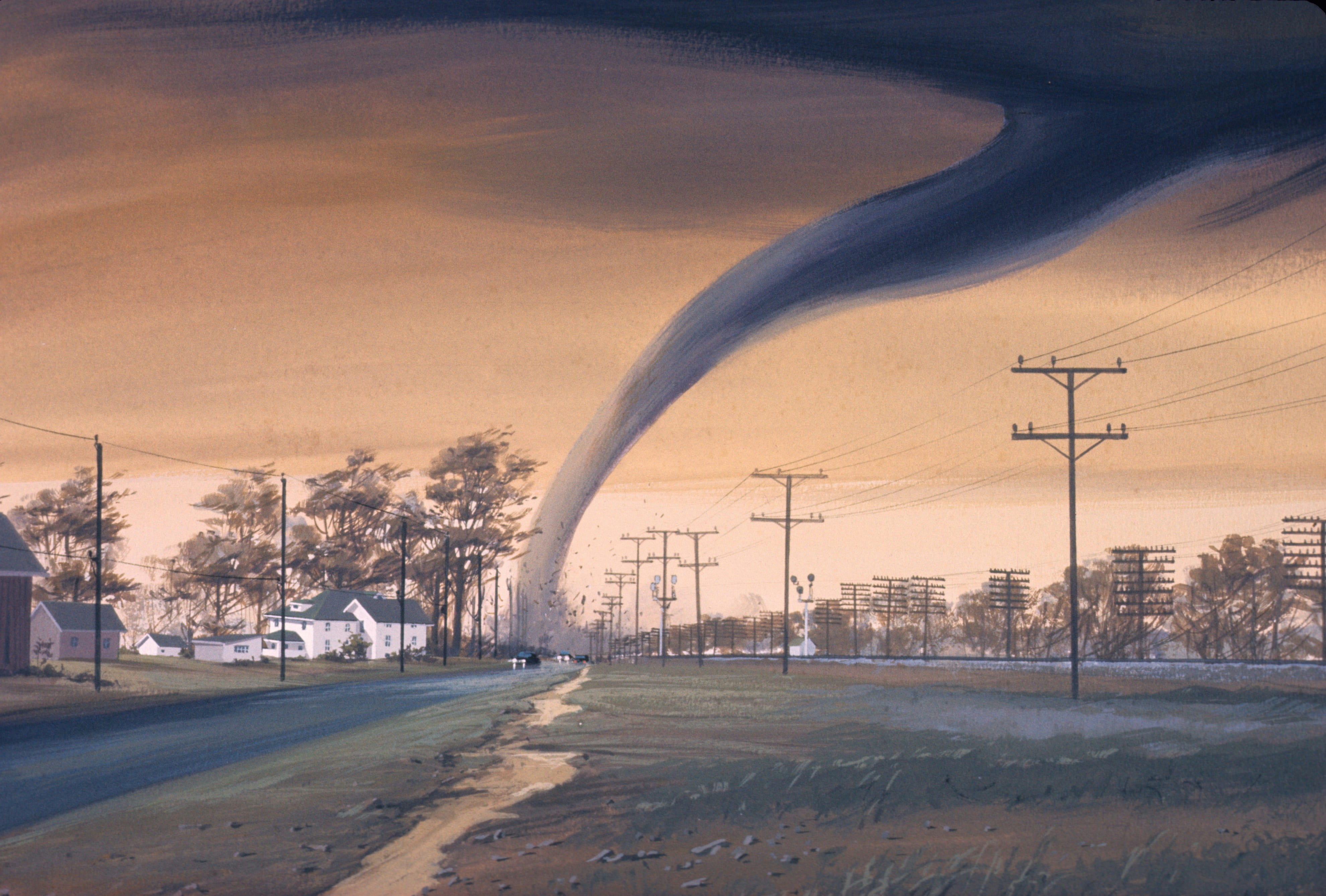
An artist’s portrayal of a tornado destroying a structure. Photo credit: National Oceanic and Atmospheric Administration via Unsplash.
This piece is in the perspective of Gavin White, a second-year in atmospheric sciences at Ohio State.
Ohio State’s severe weather response endangered students on the morning of Feb. 28.
At 5:16 a.m., phones buzzed and sirens wailed as a tornado warning was issued for Columbus, including the entire campus area. While many dorm residents heeded caution, vacating the top floors of their respective buildings for the safety of the basements and lower floors, many others did not.
The National Weather Service would later confirm four different tornadoes spawned in Franklin County alone. The closest directly hit Hilliard, less than 5 miles from campus.
The issuance of the warning highlighted many shortcomings on the part of the university. Per the Ohio State Department of Public Safety, one should go to the lowest level of the building, away from exterior walls and windows. While the procedure is straightforward, there was a severe disconnect between the policy and what was put into practice on Feb. 28.
In some instances, residents were not advised to move to a safe area during the warning. Some residents received no instruction whatsoever.
In the worst cases, some residents were told to remain in their dorm rooms for the duration of the warning, one of the most dangerous things one can do in this situation.
This is especially alarming given that many of the newer North Campus dorms are largely encased in glass on the exterior and have no basement, thus providing minimal adequate shelter areas.
While this thankfully wasn’t the case in every dorm, the fact that there was such a stark inconsistency in communication within the dorms is a grave concern. Clearly, additional training on severe weather procedures for resident advisers and students alike is a necessity to prevent inconsistent and dangerous practices from continuing in the future.
Had the tornado sustained itself to and through campus, this inconsistency could have very well led to injuries if not fatalities.
Although many dorm communications expressed concerns for student safety, the lack of communication from university officials during the event is rather concerning. Students are advised to follow instructions from Ohio State Public Safety, yet the department itself failed to provide such instructions.
The only Buckeye Alert sent simply stated that the National Weather Service had issued a tornado warning. Not a single message urging students to vacate upper levels or to shelter in place was issued. Furthermore, no message was issued once the tornado warning had expired.
To promote the safest practices, and to encourage students to take the threat seriously, updates and instructions via Buckeye Alert are a necessity.
The university’s procedures for prioritizing students’ safety during this tornado event fell short on multiple fronts. Ohio State must enact substantial changes to its severe weather procedures to protect the lives and well-being of its students.
To address the imminent concerns that arose on Feb. 28, severe weather guidelines must be expanded upon within the dorms. Resident Advisors need to emphasize severe weather safety, and students need to understand the imperative need to protect themselves during a tornado warning.
Furthermore, every building and dorm should have its tornado shelter areas clearly marked. In the cases of the newer dorms in which there is no basement and a lack of interior, glassless rooms, this is a dire need for the safety of those residents.
There is a pressing need to address the inconsistencies in severe weather protocols to ensure the safety of all students.
It cannot be understated how lucky Ohio State was that the tornado did not reach campus. However, it was too close of a call for procedures to remain as they were. Given the university’s location in a tornado-prone area, it is unfortunate that it took a tornado for disparities and an apparent lack of preparedness to come to light.
This is a critical moment for Ohio State to prioritize student safety and demonstrate its commitment to creating a resilient campus community. The university must heed this wake-up call and take proactive measures to safeguard students’ lives and well-being before a potentially catastrophic scenario unfolds.


